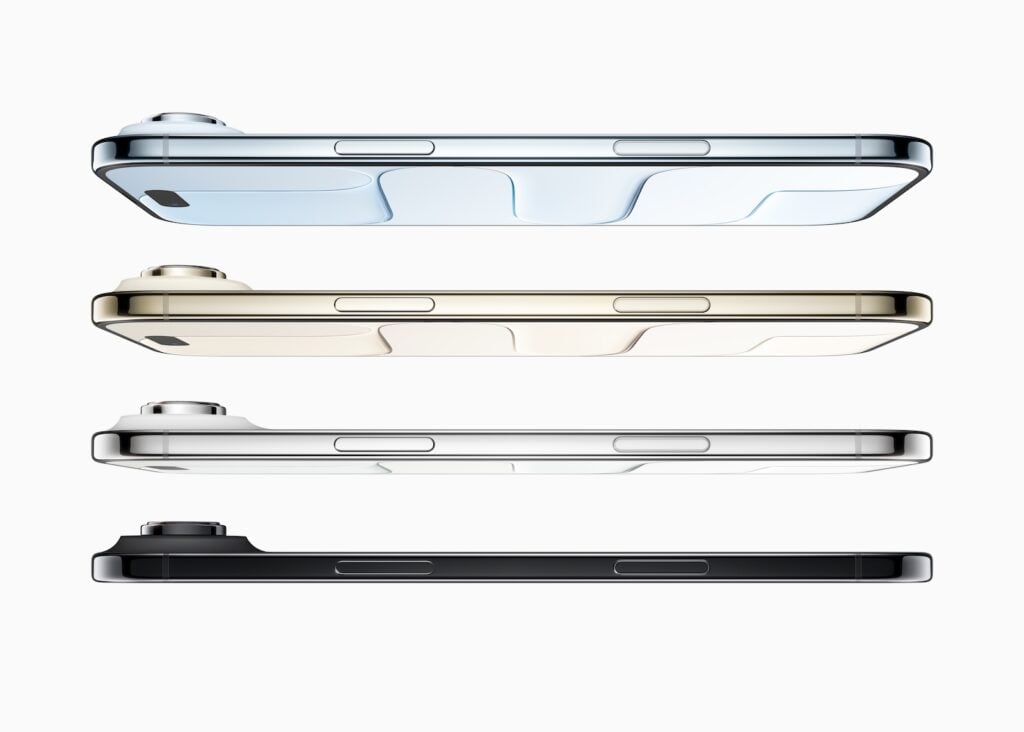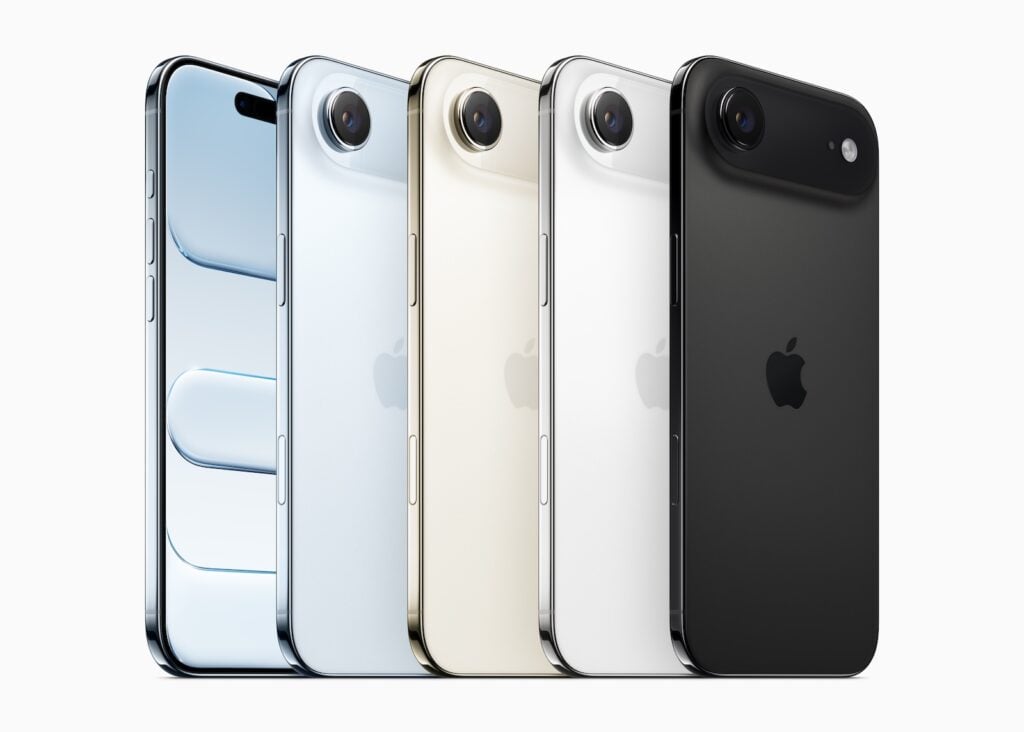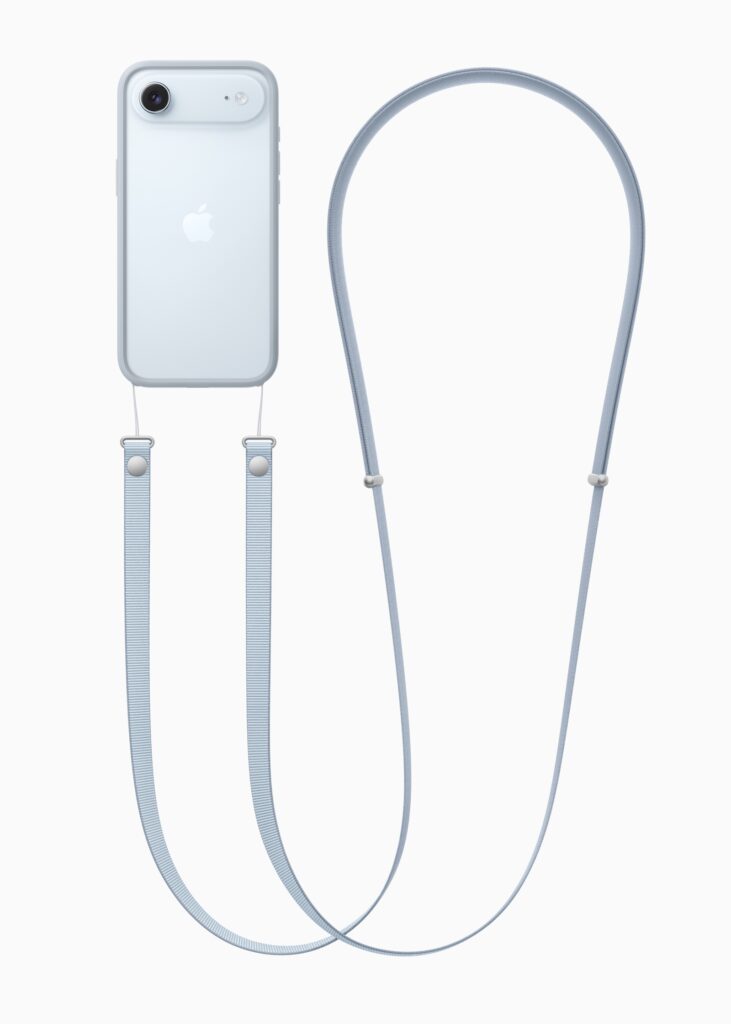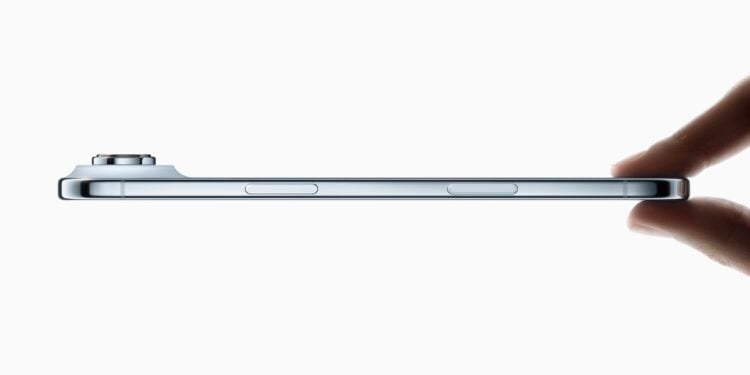The iPhone Air is the thinnest iPhone Apple has ever introduced. At just 5.6 millimeters thick, with a titanium frame, a new internal architecture, and an all-day battery, it marks a new milestone in Apple's product line. It combines professional design with cutting-edge performance, featuring a camera system, display, and software that raise current standards even higher.
With the iPhone Air, Apple is introducing a completely new member to the iPhone family. The device is so slim and light that it appears almost futuristic, yet remains robust and powerful. It's built on Apple Silicon, Ceramic Shield 2, a powerful camera system, and iOS 26 with Apple Intelligence. Apple also demonstrates how sustainability, design, and technology can be combined.
design and workmanship
At 5.6 millimeters, the iPhone Air is the thinnest iPhone yet and features a Grade 5 titanium frame. This frame is polished, strong, and withstands high levels of stress. Both the front and back are protected by Ceramic Shield 2. This glass-ceramic is three times more scratch-resistant than before and four times more resistant to cracking. This makes the iPhone Air more robust than any previous model. The internal architecture is designed to leave more room for the battery. The Action button and quick camera controls are also integrated. The casing design ensures stability and a clean appearance despite the thinness.

display
The 6.5-inch Super Retina XDR display features ProMotion with an adaptive refresh rate of up to 120 Hz. Its peak brightness is 3,000 nits—the highest ever in an iPhone. This makes the display easy to read even outdoors. An Always-On Display displays information with minimal power consumption, which can drop to 1 Hz when the display is not in use.
camera system
The iPhone Air features a new 18-megapixel center-stage front camera with a square sensor. This allows photos and videos to be taken in both portrait and landscape orientation without having to rotate the device. Group shots are automatically expanded, selfies benefit from better angles and stability, and videos are possible in 4K HDR with Ultra stabilization. Dual Capture allows simultaneous recording with the front and rear cameras. The main camera offers 48 megapixels and functions like four lenses in one device. In addition to standard shots, focal lengths such as 28 mm and 35 mm are available. A 2x optical telephoto lens with the new Photonic Engine ensures more precise details and colors. Thanks to sensor-shift OIS, the system performs even in low-light conditions. Portraits can be edited later in the Photos app with focus control. Video features have also been expanded: 4K 60 fps Dolby Vision, Action Mode, Spatial Audio, and wind noise reduction are included.

Performance through Apple Silicon
The iPhone Air is powered by the A19 Pro, N1, and C1X. The A19 Pro has a 6-core CPU and a 5-core GPU, which are significantly faster than previous generations. The GPU supports AAA games and generative AI directly on the device. The N1 brings Wi-Fi 7, Bluetooth 6, and Thread, enabling better connections and more reliable sharing via AirDrop or hotspot. The C1X modem is twice as fast as its predecessor and consumes 30 percent less power, making it more efficient than even the chips in the iPhone 16 Pro.
battery life
Thanks to efficient chips, a larger battery capacity, and intelligent software optimizations, the iPhone Air lasts all day. iOS 26 also features an adaptive power mode that analyzes consumption and saves energy early when a battery is running low.
eSIM and connectivity
The iPhone Air relies entirely on eSIM. More than 500 network operators worldwide support this technology. It provides greater flexibility, especially when traveling, as you can quickly switch between international and local plans. Since there's no physical SIM card to remove, security is also increased.
Accesories
For the iPhone Air, there are matching cases, bumpers, a crossbody strap made from recycled yarns, and a MagSafe battery pack that extends battery life to up to 40 hours of video playback. Chargers, wallets, and power adapters are also included in the new range of accessories.

sustainability
Apple uses 35 percent recycled materials in the iPhone Air, including 80 percent recycled titanium and 100 percent recycled cobalt in the battery. The new titanium USB-C connector is manufactured using 3D printing, saving 33 percent of material compared to conventional processes. Packaging is made entirely of fiber. Production runs on 45 percent renewable energy. The entire company aims to be carbon neutral by 2030.
Prices and availability
The iPhone Air starts at €1,199 and is available with 256 GB of storage. 512 GB and 1 TB options are also available. Pre-orders begin on September 12, with shipping beginning September 19 in over 63 countries. Additional countries will follow starting September 26. The model is available in Space Black, Cloud White, Light Gold, and Sky Blue.
iPhone Air: Slim, powerful, and suitable for everyday use
The iPhone Air combines an extremely slim titanium design with high performance, long battery life, and a versatile camera system. It features a bright display, new AI features, and a more sustainable construction. This makes it a model that perfectly embodies technology, design, and everyday usability, expanding Apple's iPhone lineup with a lightweight yet powerful variant. (Image: Apple)
- Apple Watch Series 11: All new features at a glance
- iPhone 17 Pro: New design, A19 Pro chip and 8x zoom
- iPhone 17 with Center Stage camera and A19 chip introduced
- Apple Watch SE 3 unveiled: Price, features, and availability
- Apple Watch Ultra 3: Innovation meets sustainability
- AirPods Pro 3: Apple's new top model for wireless audio





